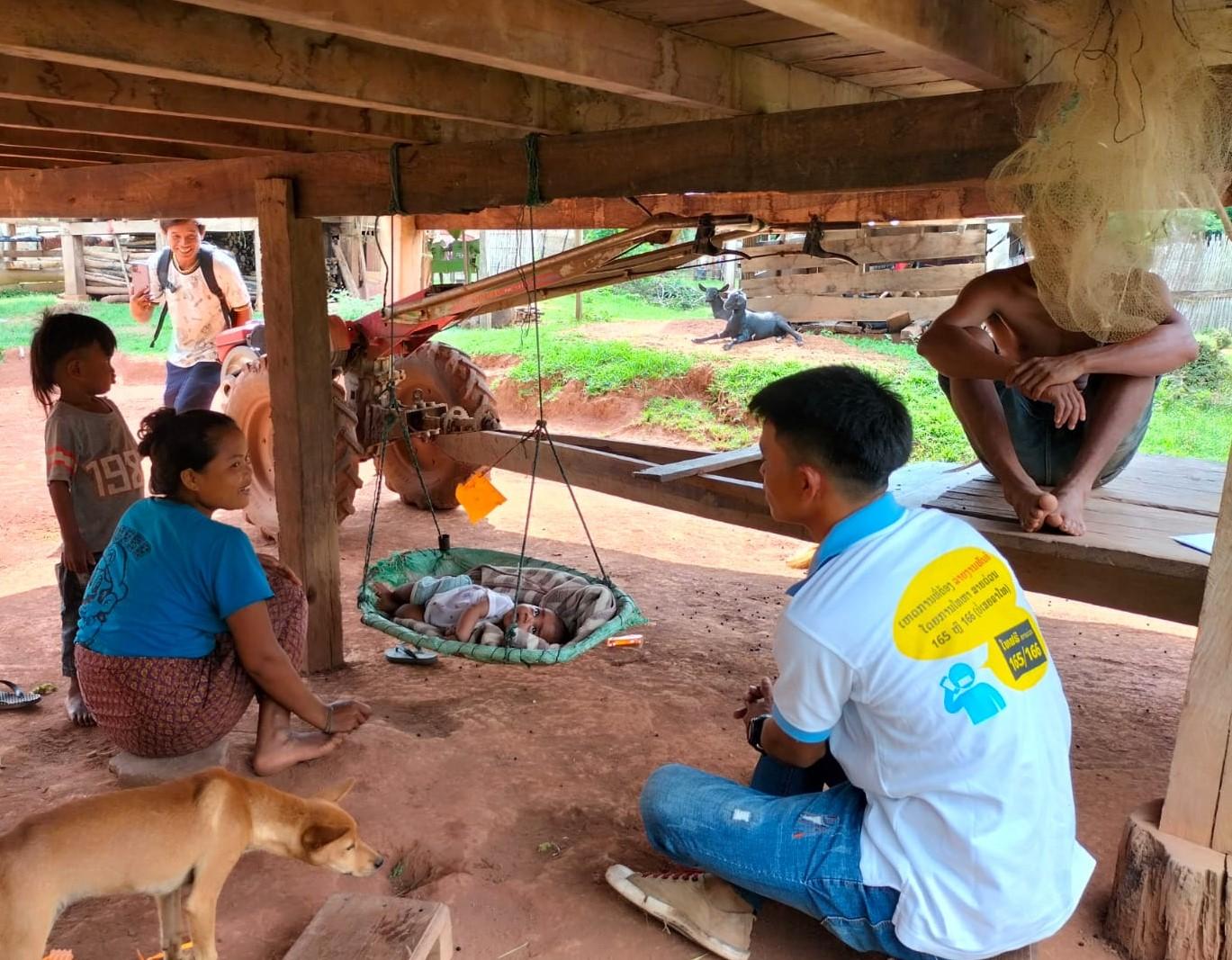Despite the significant reduction in malaria cases – now confined to just 10% of the country – the ethnic minority groups residing in the remote, mountainous regions remain vulnerable.
With the support of the Global Fund’s RAI4E grant, Health Poverty Action (HPA) has been supporting the national malaria programme and the Department of Communicable Disease Control in implementing activities to realize malaria elimination in Lao PDR by 2030.
With malaria cases continuing to decline, HPA is implementing an initiative to integrate village health volunteers (VHVs) into a dual role: malaria control and mother and child health care services. The primary objective of this pilot project is to sustain the motivation of VHVs, who have been instrumental in malaria control, as malaria case numbers continue to decrease.
This innovative approach, known as scaled-up Integrated Community Case Management (ICCM), was launched in Savannakhet and Attapeu provinces, covering 80 villages with a combined population of over 31,000 people, including 15,516 women and 2,835 children under 5 years old.
By introducing new responsibilities related to mother and child health, the project aims to ensure that these volunteers remain engaged and effective in their communities. The focus is on improving the health of pregnant women, mothers and newborns – especially those who face significant barriers to accessing health facilities due to geographical isolation and cultural constraints.
HPA, in collaboration with the Department of Hygiene and Health Promotion and other key stakeholders such as the World Health Organization and the Centre for Malaria, Parasitology and Entomology, developed a comprehensive framework for the scaled-up ICCM. This framework includes policies, guidelines, training curricula and service packages tailored to the capabilities of VHVs.
About 80 VHVs were selected for this initiative based on their proven track record in malaria elimination efforts. These volunteers underwent extensive training that equipped them with the skills needed to provide essential services, such as home visits to counsel pregnant women, care for newborns and treat sick children. The training also included instruction on data collection, ensuring that VHVs can accurately record and report health information to local health centres.
The response from the communities has been positive. In areas where access to health care is limited, the VHVs' home visits have been a lifeline for many families. Pregnant women, in particular, have benefited from the guidance provided by VHVs, learning about prenatal care, nutrition and the importance of delivering at health facilities to reduce the risk of complications.
Although it is still early in the implementation, the potential of this integrated approach is promising. By combining malaria case management with mother and child health care services, the project has not only maintained but strengthened the role of VHVs in these communities.
The integration of VHVs into a broader range of health services represents a sustainable model that can be replicated in other regions facing similar challenges. As HPA continues to monitor and evaluate the impact of the scaled-up ICCM, there is hope that this approach will lead to significant improvements in health outcomes for mothers and children, while also contributing to the eventual elimination of malaria in Lao PDR.



